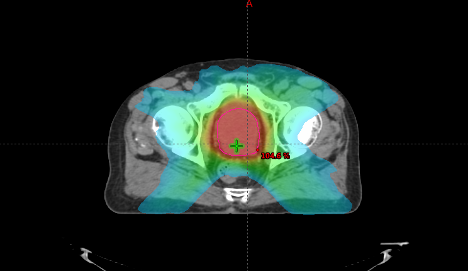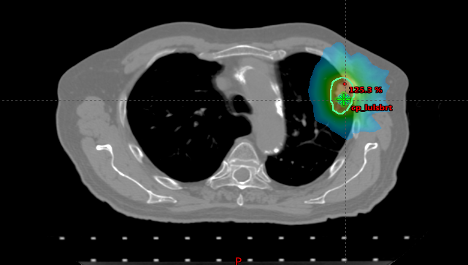
The Art and Science of Medical Dosimetry

Cara Sullivan BS RT(T) CMD
Director, Medical Dosimetry, LANDAUER Medical Physics
Immediate Past President, American Association of Medical Dosimetrists (AAMD)
Most of you are already familiar with Occupational Dosimetry, which is the monitoring of radiation doses to staff and patients.
Radiation Dosimetry, which is called medical dosimetry, is the science of generating treatment plans for the delivery of radiation for cancer patients.
A medical dosimetrist is part of the radiation oncology team and works in close collaboration with the radiation therapists, medical physicists, and radiation oncologists within the department.
In this time of the COVID-19 pandemic, the medical dosimetrist remains essential. While many patients put off routine cancer screenings in the past year, many are now returning, and it's reported that numbers of newly found cancers may swell, making treatment planning vital.
Radiation treatments cannot begin until the dosimetrist has generated the radiation treatment plan and completed the calculations. Once that plan has been reviewed by the radiation oncologist and medical physicists, and all of the required Quality Assurance has taken place, the patient can start radiation treatments.
The human body is a very delicate thing. All of our internal organs (or as we call them, “organs at risk”) need to be protected from too much radiation. Dosimetrists follow protocol guidelines for each organ. Not only do we have to consider a safe dose, but the amount of dose delivered per fractionation changes the potential damage to the organ. Every treatment plan that is generated is different; there is no monotony in this profession. The dosimetrist walks a fine line between designing a plan that treats the tumor effectively while minimizing the dose to organs.
The Art of the Science
Generating a treatment plan is much like creating an art masterpiece. Every detail of the treatment delivered needs to create a positive outcome. Most of the time that outcome is cure, but at times, treatment is used for pain relief of metastatic disease.
Shown in the illustrations below are examples of a pelvis/prostate plan and a Stereotactic Body Radiation Therapy (SBRT) plan in the lung. A pelvis plan is usually standard fractionation of around 20-36 treatments depending on staging of the disease, while SBRT treatments are delivered in as little as 1 treatment to 5 treatments at a high daily dose.

Prostate Treatment Plan: The red area is the target area where the dose needs to be the highest. As you move away from that area the color represents lower dose to spare organs such as the rectum, bladder, bowel and bones.

SBRT Lung Treatment Plan: Much smaller tumor and higher dose delivered daily. Organ sparing to lung, heart, airways, bone.
When a dosimetrist looks at the isodose lines on their plan, they are looking for a very conformal design. I have often heard a dosimetrist say, “wow what a beautiful plan; that is a true work of art!”
A dosimetrist is often a great problem solver. They continually seek and try new techniques to make a treatment planning better and will assist the radiation therapist with difficult patient setups. Most cancer patients never meet the dosimetrist, and honestly don’t know we exist. I call us the silent heroes, but still an important part of the cancer care team.
At LANDAUER Medical Physics (LMP), I work with many talented medical dosimetrists and physicists. Due to our very large team across the United States, we have a wealth of treatment planning and radiation equipment knowledge. With a large experienced team like LMP, one can always find assistance for difficult plans and treatment techniques. Working collaboratively allows us to go above and beyond our client’s expectations. With the COVID-19 virus and many people working from home, LMP was already prepared due to the success of our remote dosimetry division. I applaud the dosimetry team for their continued dedication.
As a Director of Dosimetry for LMP and a past President for the American Association of Medical Dosimetrists, I have an immense passion for the field of Medical Dosimetry.
To learn more about the field of Medical Dosimetry visit the AAMD’s website at www.medicaldosimetry.org.
